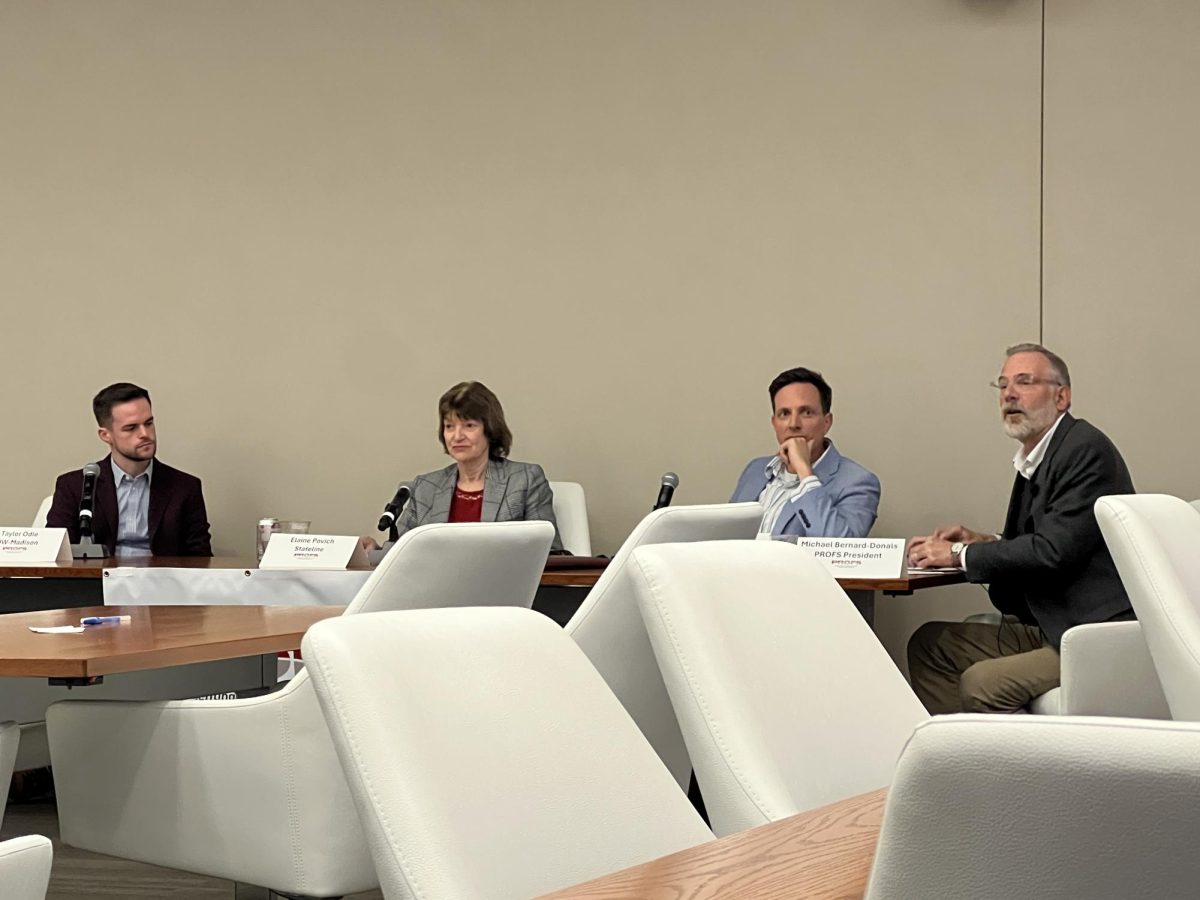Upon her arrival in Madison, Chancellor Rebecca Blank’s husband paid a visit to the University of Wisconsin’s Natatorium. It was crowded, the buildings were old and he returned to say, “Becky, you don’t need to go here,” Blank said in an interview with The Badger Herald.
UW ranks among the lowest in terms of quality of its recreational facilities compared to its peer institutions both in the Big Ten and other schools across the country that are comparable to its size.
In the Big Ten, UW is one of only two institutions without any plans to build or complete new facilities on their campuses, John Horn, director of Recreational Sports, said. Rec Sports hopes to change that this fall when they unveil a new master plan to renovate and potentially construct new facilities on campus.
Last spring, Rec Sports was granted $100,000 to reopen a study that looked at the facilities they manage because most have a number of major issues that could cost tens of millions of dollars to repair.
The Natatorium will require $10 million in repairs during the next five years due to a collapsing roof, the Southeast Recreational Facility needs cladding on its roof, a $2 million project, Nielson Tennis Stadium requires $1 million dollars in repairs, the Shell is on the verge of closing down as hazardous lead paint has been found in the ceiling and air system, which will cost between $2 and $3 million to repair, Ian Malmstadt, Student Services Finance Committee vice chair, said.
“These are buildings that are decaying and, you know, what’s the next thing after we repair the roof?” Malmstadt said. “What’s the next thing that’s going to fall down in the 60-year-old Natatorium”?
Shortage of Space
In addition to faltering facilities, UW is dealing with a severe space shortage, Horn said.
UW has more than 100,000 people eligible to use the facilities and 12,000 square feet of fitness space total, Horn said. General fitness standards dictate that 1.5 square feet should be allotted per person, which means UW falls 85,000 square feet short of that benchmark, he said.
With 77 percent of the student body using the recreational facilities around campus, the space shortages are apparent when individuals may have to wait 30 to 60 minutes to use equipment during peak hours.
Moving beyond NatUP
In 2010, Rec Sports led a campaign, dubbed NatUP, which advocated creating an addition to the Natatorium. The campaign failed when the issue was brought to an all-campus referendum.
NatUP came right after the “struggle” over building Union South and the Memorial Union renovations and there was a lot of tension surrounding raising students’ segregated fees, Malmstadt said.
“I think the students realize what the value is this time around,” Horn said. “This time it is not just the Natatorium, but all of our indoor and outdoor facilities that we are assessing. We are creating a plan for the next 50 years for the campus, not just trying to patch up the infrastructure issues we have in a single facility.”
Students will be invited to participate in open forums where they can learn more about the plan and provide feedback, which will help shape the plan that moves forward toward referendum, Horn said.
Next steps
The university is re-examining its indoor facilities to see what the best options are for renovating or where new space can be created. Outdoor facilities are being looked at as well since 25 percent of outdoor programming is lost due to wet fields.
“This is not just about one facility – it is a comprehensive scope of the master plan which includes all four indoor facilities and outdoor activity spaces that are used right now,” Horn said. “Some of those certainly will just be renovated and for some of them, it’s looking like the cost-efficient method would be to knock them down and build a new one.”
Cost efficiency and long term sustainability are the focus of the master plan, Malmstadt added.
“Is it wise to spend [repair money] on buildings that aren’t going to get any better or can we actually service students and build the buildings that are going to meet the need that we have on campus for recreation”? Malmstadt said.
The biggest concern is where the funding will come from for these facilities to be renovated or created, Horn said.
The master plan will address funding and the Associated Students of Madison requested Rec Sports generate alternate sources of revenue and funding for this project, Horn said.
It is likely that segregated fees will increase regardless, whether to fund repairs or new projects, Malmstadt said.
“We will continue to be very cognizant of segregated fees at UW, but what we need to determine is what students are willing to support and to what extent,” Horn said.
Editor’s note: The headline of this article was changed from “Rec facilities not up to state code” to “Rec facilities not up to state building standards” to more accurately represent the current condition of the university’s recreational facilities.
















